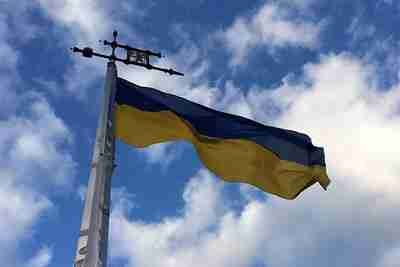War is an instructive but harsh teacher. We need to learn from the sacrifices that others have made and armed with this knowledge and wisdom be prepared for the future. One of the lessons of the Ukrainian conflict is that globalisation is no longer a protective shield to prevent conflict. A major conventional war between developed nations is still possible even under the shadow of nuclear weapons and violence remains the dominant language.
What has stood out is the Ukrainian resolve to resist and defend themselves and the West’s willingness to rapidly arm them. Now Ukraine’s focus is on being armed by the Western countries with the most sophisticated weapon systems but these require an extremely high degree of skill to handle and will take time to be delivered in the required numbers.
A question, therefore, being asked is whether the substantially expanded and expedited Western arms shipments, and increased intelligence support will only help in prolonging the war which could lead to a worse outcome for Ukraine or are there other reasons for President Volodymyr Zelensky demanding the latest weapons from his benefactors?
Further, will these weapon systems lead to an intensification of violence or bring an end to the conflict? Russia still remains a major power, with more than three times Ukraine’s population, a large military-industrial base, and substantial reserves of military equipment. President Vladimir Putin also sees the war as an existential conflict that Russia must win.
Winter worries
The winter stalemate with missile and drone attacks on Ukrainian critical civilian infrastructure such as power stations, electricity grids, water treatment plants and roads and bridges has done considerable damage in Ukraine. These attacks have no doubt exposed the prohibitive costs of war. A grinding war of attrition does not favour Ukraine. Hence the recent rush to get more weapons including tanks, long range vectors and fighter aircraft is unlikely to tip the balance.
Outside support may enable Kyiv to hold the line and make limited gains come spring, but ousting Russia from all the territory it now controls may be impossible, no matter how much aid is sent. There is also the continued possibility of escalation. “Fundamentally, these deliveries cannot and will not change anything… (they) can only prolong the suffering of the Ukrainian people,” as per Kremlin spokesman Dmitry Peskov response to a question on France’s decision to send armoured vehicles to Ukraine.
What has stood out is the Ukrainian resolve to resist and defend themselves and the West’s willingness to rapidly arm them.
President Zelenskyy’s recent tour of European capitals was aimed at pressing allies for modern, long-range weapons. The UK agreed to start training Ukrainian fighter pilots and also made an offer of “long-range capabilities”. On his visit to the UK, President Zelenskyy said that unless Ukraine was given advanced long-range weaponry including fighter jets, the war could turn into a “stalemate” because of Moscow’s willingness to send so many of its men to die.
France, Germany and other allies in the EU however have not yet agreed on providing fighter aircraft. A formal request was made to the Netherlands for the transfer of F-16 fighter jets and Ukraine’s Defence minister Oleksiy Reznikov is scheduled to meet NATO defence ministers with the aim to secure “an aviation platform” to protect Ukrainian skies, as well as more tanks and ammunition.
Artillery and ammunition are Ukraine’s most urgent requirements, which Deputy Prime Minister Olha Stefanishyna said is needed “immediately”.
Training, weapons and more
It would take months to train even experienced pilots on how to fly an F-16 or another multirole jet and master its weapons systems. American-built M1 Abrams tanks, which are being supplied directly by the manufacturer General Dynamics, are unlikely to be delivered before 2024 and have huge fuel requirements as they are being powered by a Gas Turbine Engine. Even the Leopard 2 tanks may take several months to arrive in the numbers promised. While the Challenger 2’s may arrive but their numbers are too few to make an impact and they have a rifled 120mm gun which has ammunition compatibility issues, Further, being no longer in production there are serious maintenance issues.
One reason Ukraine is clamouring for these weapons now is that it realises that it has no option other than switching away from Soviet-era equipment for which there are few and finite sources of ammunition and spare parts. Ukraine began the switch to NATO -standard artillery last summer with the first deliveries of US howitzers and are now firing more NATO standard 155mm shells than 152mm Soviet-standard munitions, the swich to the Leopards and Abrams is also necessitated by the availability of 120mm tank ammunition versus the Russian 125mm standard tank ammunition used in the T-72 and T-90.
Another reason could be that Ukraine feels it may be able to use its existing stocks of weaponry without restrictions if it knows it has replacement equipment arriving. It can throw more of its Soviet-era tanks into efforts to fend off an imminent Russian offensive, and then use its Leopards and Challengers in its expected counter-offensive once the terrain and weather permits. While some analysts believe that Russian Forces are currently in a weak position and that these more advanced tanks could help Ukraine to push Russian troops back.
Red lines
Ukraine may also be trying to demonstrate its own resolve and that of its supporters. Sending modern fighter jets would be a demonstration of the West’s commitment, said Yuriy Sak, adviser to Ukraine’s defence minister. “It would send a powerful message to the aggressor, saying that for Russia this is an unwinnable and unsustainable war because the free nations of the world will stand with Ukraine until victory and will provide Ukraine with all the necessary means that Ukraine needs to achieve this victory soon.”
While on the other hand, Kremlin spokesman Dmitry Peskov warned that any delivery of Advanced Fighter Jets would only result in a prolonged and painful conflict for Ukraine. He said lines were beginning to blur when it came to the level of involvement NATO states had in the conflict. “The line between indirect and direct involvement is gradually disappearing.
The West has crossed many self-imposed red lines. It was once reluctant to supply critical weapon systems fearing escalation but now provides Ukraine with Stinger and IRIS-T low-altitude anti-air missiles, HIMARS rocket artillery, and Patriot high-altitude air defence.
There is no denying the need for kinetic capability and the willingness to use it is essential if enemies are to be deterred or defeated. But war is also a test of logistics and industrial capacity. Huge amounts of ammunition need to be produced and transported, spares and maintenance also play a major role on the battlefield and then there is the requirement of fuel.
The West has crossed many self-imposed red lines. It was once reluctant to supply critical weapon systems fearing escalation but now provides Ukraine with Stinger and IRIS-T low-altitude anti-air missiles, HIMARS rocket artillery, and Patriot high-altitude air defences. The US and Germany have now also agreed to supply tanks. However, there are analysts who are apprehensive that this could lead to a direct confrontation between NATO and Russia.
But getting weapons is only one aspect. You have to be able to use the weapons effectively and to be able to exploit the capabilities of these sophisticated weapon systems you need training at individual, crew and at an integrated level and there is also the logistic sustenance and the concepts and doctrines that govern their employment.
War worries
Even experienced crews require intensive training to convert as even a small thing like the direction in which a switch comes on varies from Western to Soviet tanks. Competence in operating equipment remains a prime military capability. Most of the weapon platforms are offensive platforms and the scope of the present conflict could alter drastically if these weapons are used to launch an offensive into Russia.
However, a predominant view remains that Russia will need to be defeated militarily before any negotiated peace and any lull in hostilities will simply permit Russia rebuild its forces and renew its assault. This could be the prompt for the induction of weapons.
The truth remains that major wars severely test armed forces and the Russia–Ukraine war is no exception. Although there are currently only two direct combatants, many other countries are involved in the conflict: politically, diplomatically and economically, by providing military and intelligence assistance. This military support, includes a wide variety of weapons, ammunition, spare parts and training.
External support for in Vietnam, Iraq, and Afghanistan kept those wars going but the question remains is whether they left them in better shape. At one point in each of these countries the US finally decided that victory was not achievable without inducting far greater resources in terms of troops and equipment and they pulled out and went home.
Prolonged fighting at a high intensity and over a wide geographical area over a considerable period of time is exhausting and has its challenges and both sides are finding it difficult to prevail. While the US and NATO forces are not physically fighting in Ukraine, and peace or a cease-fire may still be a long way off, but thinking about a peaceful end state is in everyone’s interest, and especially Ukraine’s hence providing more arms may not be the best lever of influence to push for discontinuity of the conflict.
-This story earlier appeared on www.firstpost.com


